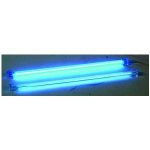Looks like my mental auto correct got the better of me again. I did indeed mean 'common', not cold. I'm glad I was able to provide a bit of humour, definitely not offended at being made fun of it, rather the opposite actually.
By integrated I meant not 3 separate pieces of 1 digit each with 10 pins but 3 digits all in one package with 12 pins. I've seen a few items on e-bay, one being the ASR3361 however they don't have datasheets on their add and I haven't tracked one down yet. presumably you get that with the item and I'd definitely ascertain or obtain this prior to purchase. One of the vendors is someone whom I've bought a few things from and they're more than happy to provide any info like that up front.
Please note I'm fairly new to this, though the interest has always been there. So far I've only made the CD Macro rail project with adding LED's and altering the code for my needs. I'm quite confident I can do the multiplexing aspect, I saw that in the manual and it makes sense to me.
However my reasoning for questioning the number of driver chips for the integrated 3 digit packet. The single digit ones each have 10 pins and the The 3 digit one has 12 pins. This made me believe there is just one pin added per additional digit beyond one (perhaps it's one anode per extra digit). Looking at the simple circuits manual it shows the schematic of 7 outs of the 4511B to each segment on a single digit. No problem. I presume another pin is dedicated to the decimal point, leaving 2 pins (Anode and Cathode). So looking at the 3 digit unit with only 12 pins I couldn't see how you would multiplex 3 of the 4511B's to control each digit individually as it would require 21 input pins on the 3 digit display plus those for decimal and power, theoretically to me the 3 digit unit should have a minimum of 26. This got me wondering if it had the same 7 inputs for the segments, 1 for decimal points, 2 for anode and cathode and the two extra pins were for toggling high low to multiply the 7 to 21 in some fashion. The example, again from the simple circuits manual, with the multiplexed 4026B drivers and 2 separate 7 segment displays makes sense because each digit display has 7 input pins. I'm not sure how a single integrated unit 3 digits can be driven with only 12 pins??? And I can't see how a multiplexed system can be connected to only 12 pins. This is what led me to wonder if there was some internal controller built into the 3 digit display to allow a single external controller. I hope that makes sense. I tried searching for how they work but couldn't find any literature. I really would like to know.
And thank you Marks I'll definitely have a look at the project Marks cited. I only have 08M2's at the moment but I have found a quite decently priced supplier in Australia.
Thank you all.

